Story at a glance:
- As specialized textiles that reflect solar radiation, shade fabrics can make an important contribution to attenuating the urban heat island effect.
- Shade fabrics help protect against skin cancer by blocking UV radiation.
- Shade fabric companies offer a wide variety of materials, coatings, colors, and styles that meet your design needs whether inside or out.
Socializing, dining, or exercising outdoors has become more popular post-Covid. Yet, the summer sun poses a danger from UV exposure especially at high altitudes. Since most people live in urban areas, shade fabrics can reflect solar energy back into space, reducing the urban heat island effect and limiting the effects of global heating—such as heat waves—caused by the climate crisis.
Let’s explore the latest research on shade fabrics and how designers and builders can meet the needs of their clients.
What are Shade Fabrics?
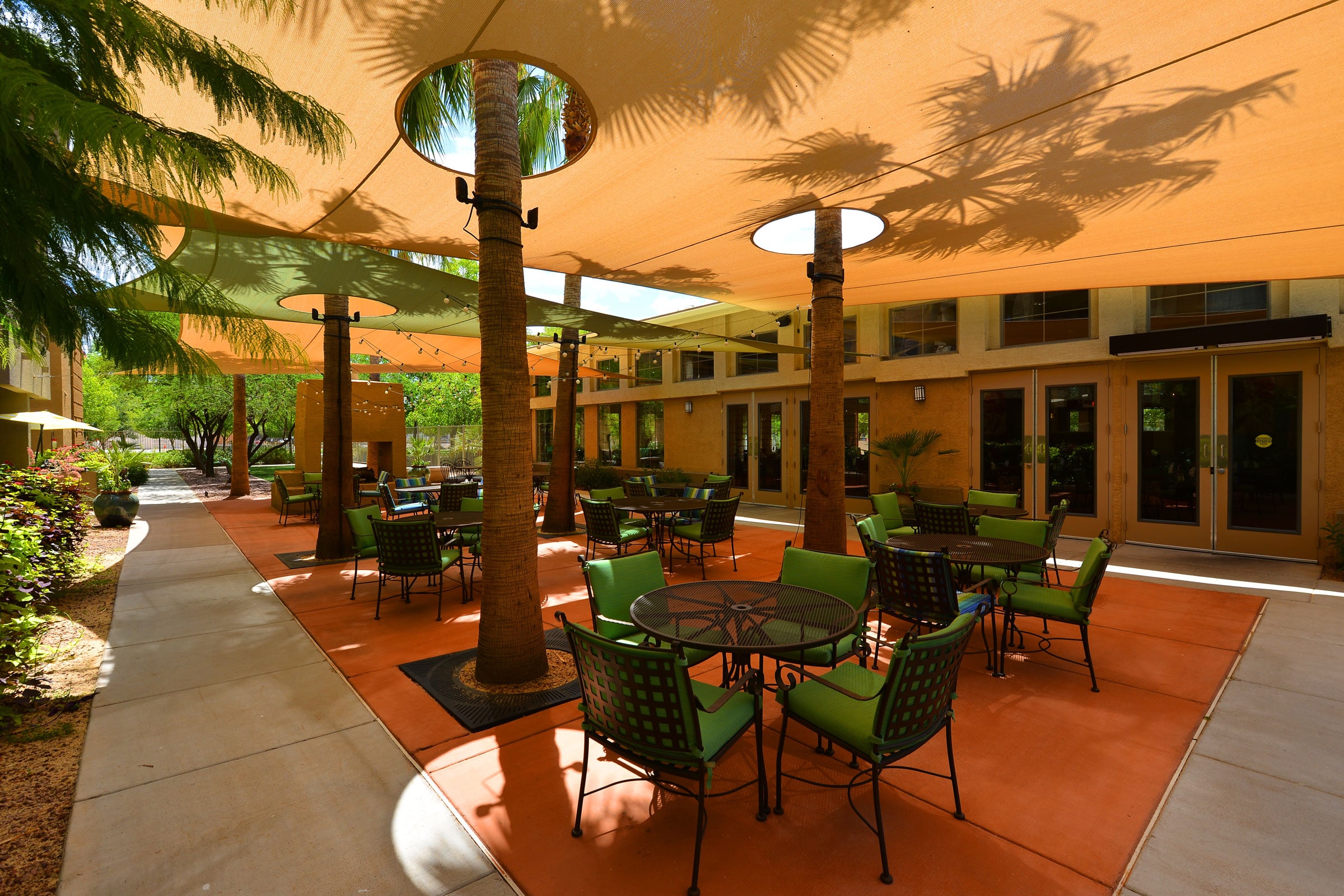
GALE Pacific’s commercial shade fabric undergoes extensive testing across colors. Photo courtesy of Shade Industries
Shade fabric is a textile used to block the intrusion of solar radiation and harmful UV light into an indoor or outdoor area. When installed outside, they provide shade and reduce glare. Interior shades also reduce glare but, when user-adjusted to maximize personal comfort, allow in natural light and the ability to see outside, worker productivity increases.
New Research in Shade Fabric Designs
Recent design research with shade fabrics used in built-shade designs in public parks in the United States and Australia reveals that design styles vary greatly in terms of how much UV exposure they allow. For instance, a sided-roof structure, such as hip and ridge styles, offer a reduced sky view but greater protection from scattered and diffuse UV compared with open design styles such as shade sails or cantilever designs.
For better UV protection and to boost personal comfort, a white or light tone on the sun-side of shade fabric coupled with a dark or black side facing the earth is best because this arrangement reflects incoming solar rays only on its outer surface while absorbing any rays reflected off the ground. The selection of shade cloth with the maximum UV protection factor (UPF) is always best to avoid sunburn or worse when low-UPF shade fabric is used.
Another idea is to enclose the built-shade with nearby vegetation or wall structures. Doing so will block scattered UV rays and maximize UV protection when users are under the built shade structures. If designers go this route, make sure the structures are not climbable to avoid the risk of users falling.
Why Do We Need Shade Fabrics?

As global temperatures soar and heatwaves become more severe, shade fabrics have never been more important to protecting the health of our communities. Photo courtesy of Polyfab USA
We need shade fabrics as protection against increasing global temperatures and heatwaves caused by the climate crisis. Heat waves are now becoming longer, more intense, and more frequent all over the world.
Besides global heating, UVB and UVC solar radiation increasingly arrives at earth’s surface as stratospheric ozone is destroyed. Although the ozone hole appears to be recovering, fluctuating levels in recent years, in combination with several emerging threats, are concerning.
Recent research suggests that if solar absorption at the earth’s surface can be reduced to 5% and reflection increased to more than 80%, shade fabrics will be more effective for use in cities to reduce urban heat island effects and reduce global warming. Experiments show that one shade fabric that performs the closest to this is a textile folded into six layers of white polyethylene film, claimed to have a 50-55% shade factor due to titanium dioxide and UV neutralizing chemicals. It absorbs 15% of solar energy and reflects 76%. The most reflective shade fabric to date that is also commercially available reflects 92% of solar radiation and absorbs 3% when folded into two layers.
Besides achieving high solar reflectivity, there are other design concerns with shade fabrics. Improved structures and frames to securely hold the shade fabric and prevent it from flapping would hasten their adoption by cities in need of heat relief. Also, techniques to allow rapid replacement of damaged fabric are desirable.
Shade Fabrics in the United States
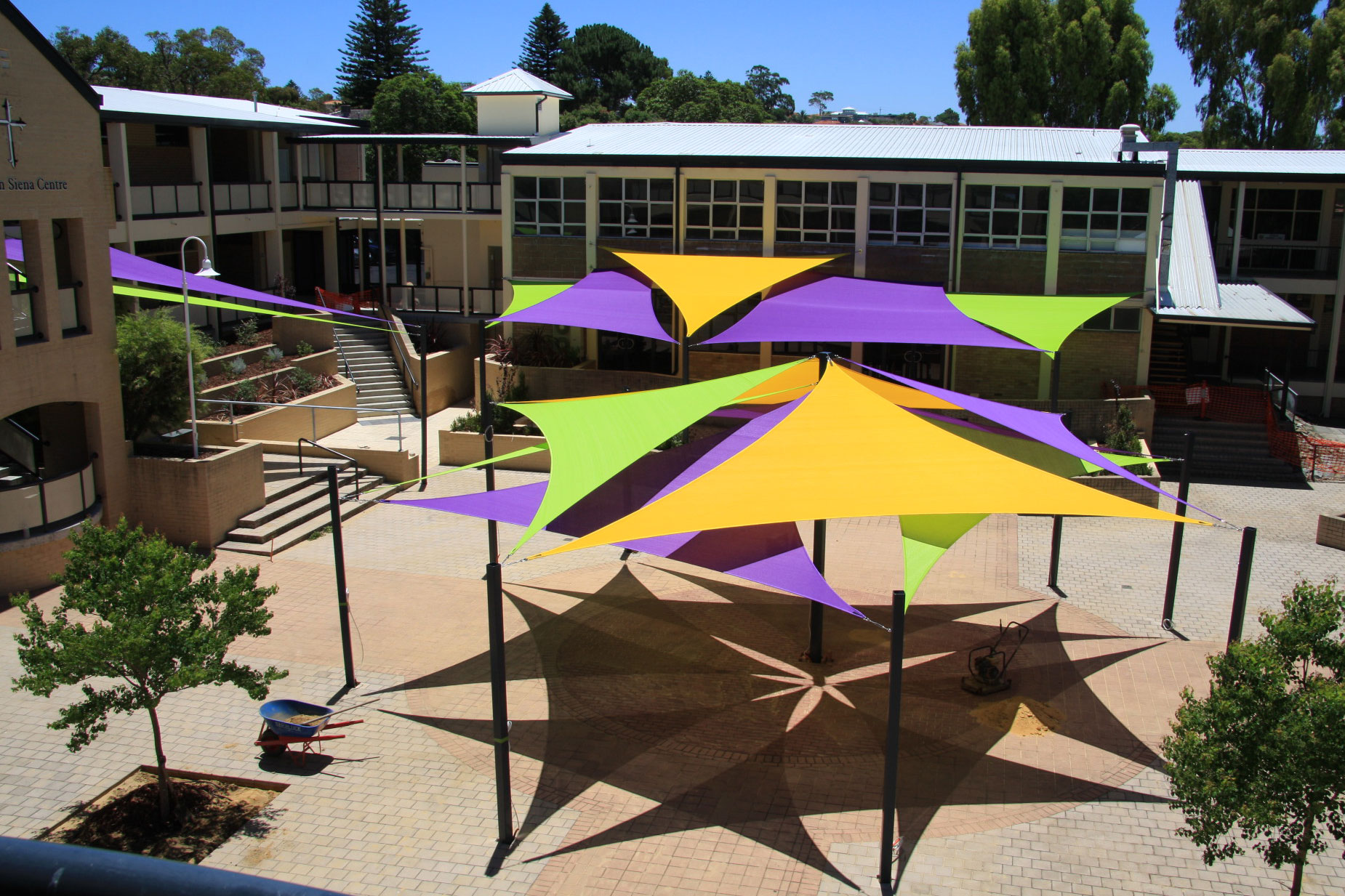
Shade sails and structures have only just begun gaining popularity in North America. Photo courtesy of Polyfab USA
While shade sails and shade structures have been used for decades in the sunnier southern hemisphere, they’re just beginning to gain popularity in the US, according to Steve Morenberg, managing director of Polyfab USA.
Triangular shade sails possess just a single plane of protection. If you have to use triangles, Steve Morenberg says, use height difference to add dimension, and add multiple triangles to add appeal.
By contrast, a square shade sail provides 24% more shade than a triangle. A four-corner shade allows you to twist the fabric to get a saddle shape (hypar). “The hypar shape is going to give you better shading. It’s also going to give you better wind and rain resistance over the structure. If you have a way of twisting the shape of the sail to get that hypar shape, that saddle shape, the fabric will not flap nearly as much. It will last a lot longer,” Steve Morenberg, managing director of Polyfab USA, explains in a previous gb&d article.
What to Consider When Choosing Shade Fabrics
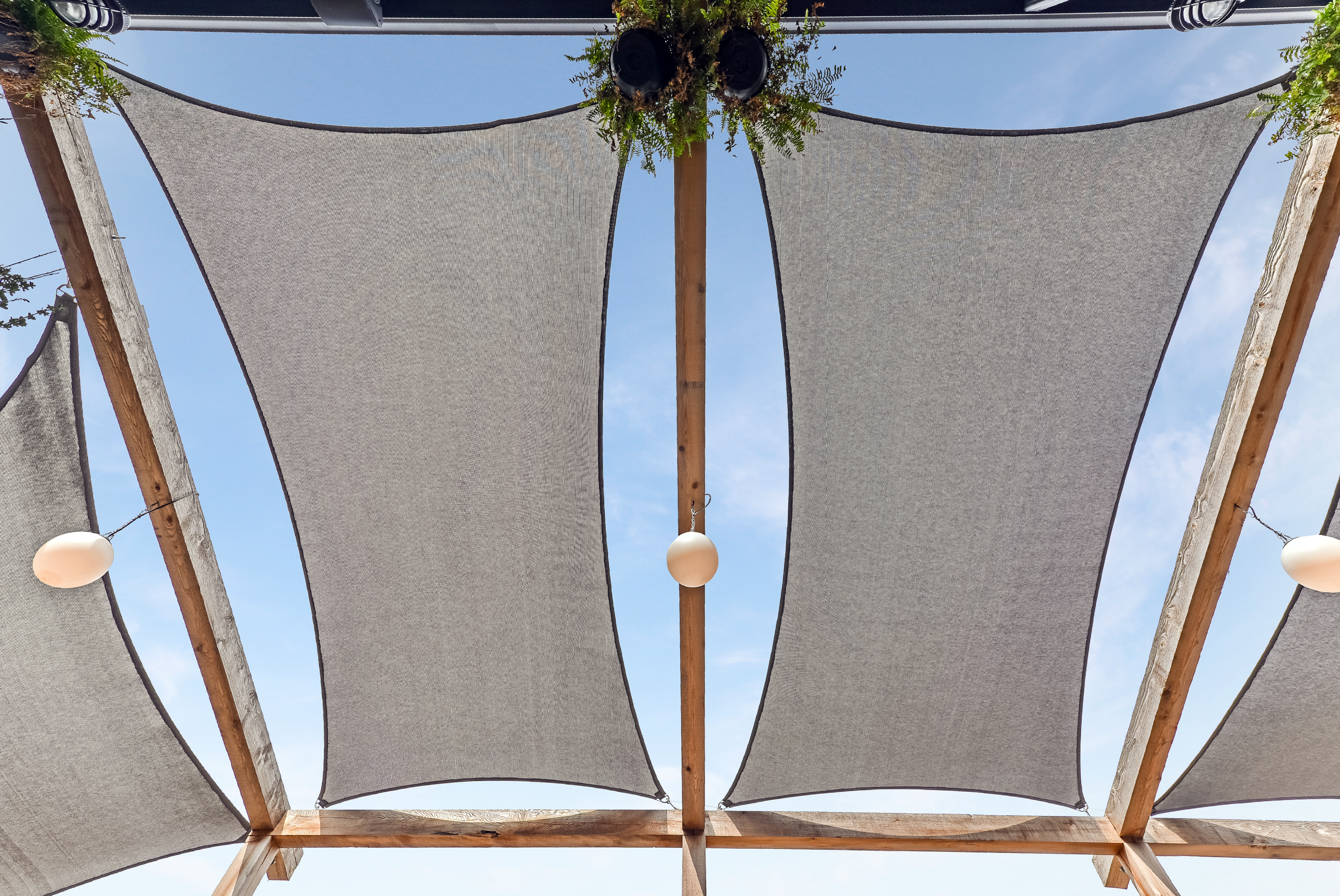
Things like heat gain, level of light filtration, and even color are all important factors to consider when choosing shade fabrics. Photo courtesy of Sunbrella
When choosing a shade fabric that offers the best fit for your project, there are several factors to consider. These factors are central to choosing interior shades for windows, but have applicability to outdoor shade structures, too. “Consider the three main benefits that drive shade installation: thermal performance, aesthetics, and comfort. You can achieve all three of these to some extent, but by determining your number one priority, you’ll be in a better position to choose the right shade and hardware to meet your needs,” Colin Blackford, former director of business development at Mermet, wrote in a previous gb&d article.
If the concern is heat gain, a durable exterior window shade may be better than an interior shade. In this case, very little heat will enter.
But if your concern is filtering the light—removing the harmful rays while allowing some light to pass through—interior shades are better.
Fortunately, in terms of filtering, all types of glass block the majority of UVB which is the more harmful type of ultraviolet radiation, but they transmit a variable amount of UVA. Laminated glass provides the best protection against UVA, while tempered glass is a poor filter of UVA. In animal studies, UVA has also been linked to cancer, so it’s safer to avoid any prolonged exposure even inside. Interior shades that perform this function would complement what your glass can’t block.
Eliminating glare is also important to ensure productivity at work or at home. Black or dark shades are ideal for this, but they’ll also absorb heat and release it inside. Koolblack by Mermet solves this problem by eliminating glare while keeping heat out.
How Do Shade Fabrics Affect Thermal Performance?
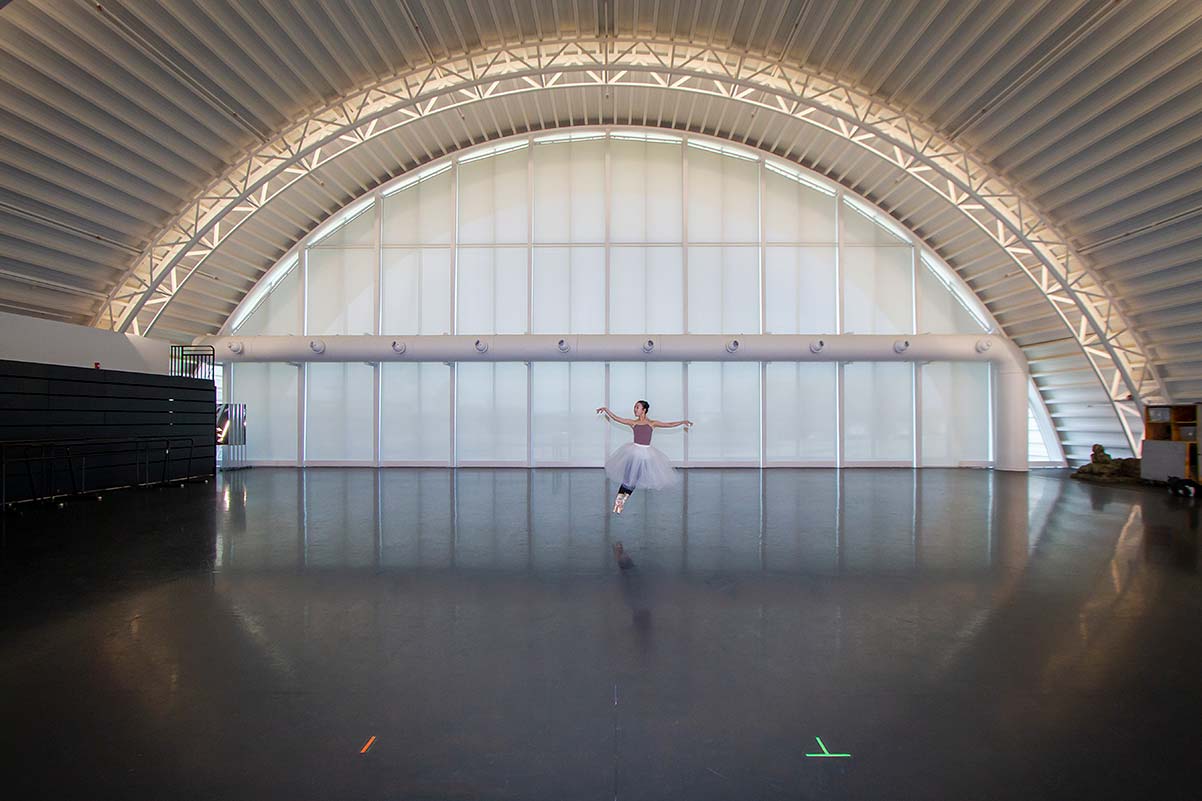
Natural light takes center stage in the Oklahoma City Ballet rehearsal space, as Hunter Douglas Architectural’s RB500 automated shades with Mermet’s E Screen 1% in white fabric filter light. At the large scale arched window, 10 high performance shades line the bottom while another 10 shades are angled along the top. These smart automated shades use sun sensor technology to lift and retract with the sun’s movement. When fully opened, the upper angled shades lower while the bottom half of the shade lift to meet in the middle, evoking a sun disappearing into the horizon. Photo: Kris Decker & Firewater Photography
The color, weave, and coatings on shade fabrics affect their thermal performance. Black or dark colors are the best at absorbing heat. A loose weave also allows more light and heat to enter. The most important factor is the presence of a low-E coating.
Shade fabrics with a low-E coating do a superior job of keeping heat out while allowing light in. A low-E coating on a shade functions just as it does on a window. It will reflect heat just like a low-E window does. This coating will help lower heating and cooling costs because your HVAC system won’t need to respond by fluctuating indoor temperatures caused by incoming solar radiation. Mermet’s E screen performs this task well according to experimental testing.
Examples of Shade Fabrics
Here’s a brief look at some of the shade fabrics from a sustainability perspective.
Sunbrella
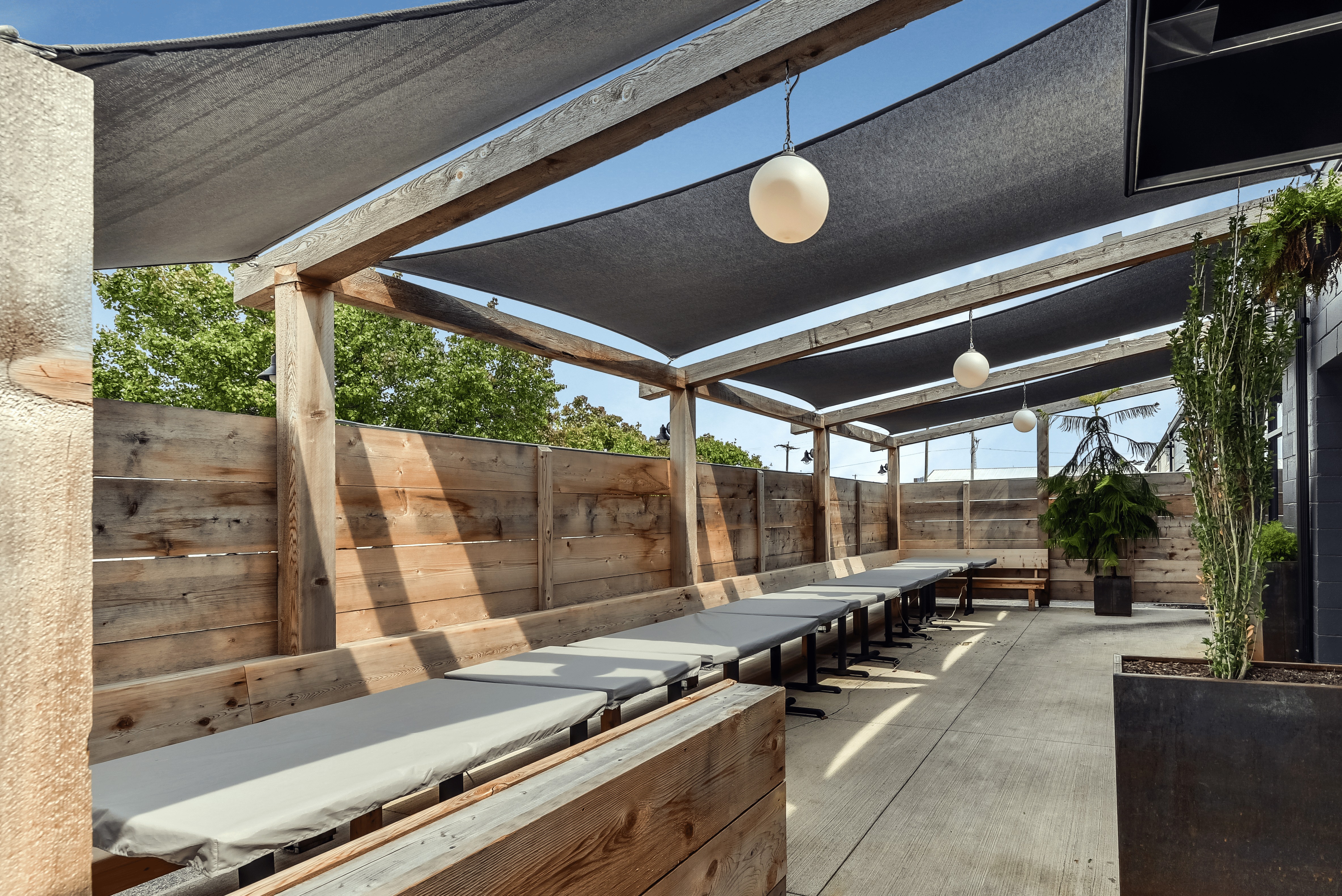
Sunbrella helped to transform this Columbus, Ohio, eatery. Photo courtesy of Sunbrella
Sunbrella Renaissance fabrics by Sunbrella combine up to 50% post-industrial recycled Sunbrella fiber with virgin Sunbrella fiber. “We have partners who help us process waste streams back into usable fiber. We render this material back into fiber form so it can be spun into yarn. From yarn, we create beautiful, high-performing fabric,” Vince Hankins, Sunbrella’s industrial business manager, previously told gb&d.
All Sunbrella fabrics are zero landfill, GREENGUARD Gold Certified, and OEKO-TEX certified, among other environmental certifications.
Shelter-Rite Brite

Shelter-Rite architectural fabric structures offer an alternative to brick-and-mortar. Photo courtesy of Shelter-Rite
Shelter-Rite Brite architectural fabric, made of a PVC-coated polyester with an additional fluoropolymer coating, is durable and waterproof. Architectural fabric structures (AFS) using this Shelter Rite membrane even withstood Superstorm Sandy in 2012 at the J. Owen Grundy Park in New Jersey. These AFS provide shade during the day and light at night to visitors at the park.
Mermet
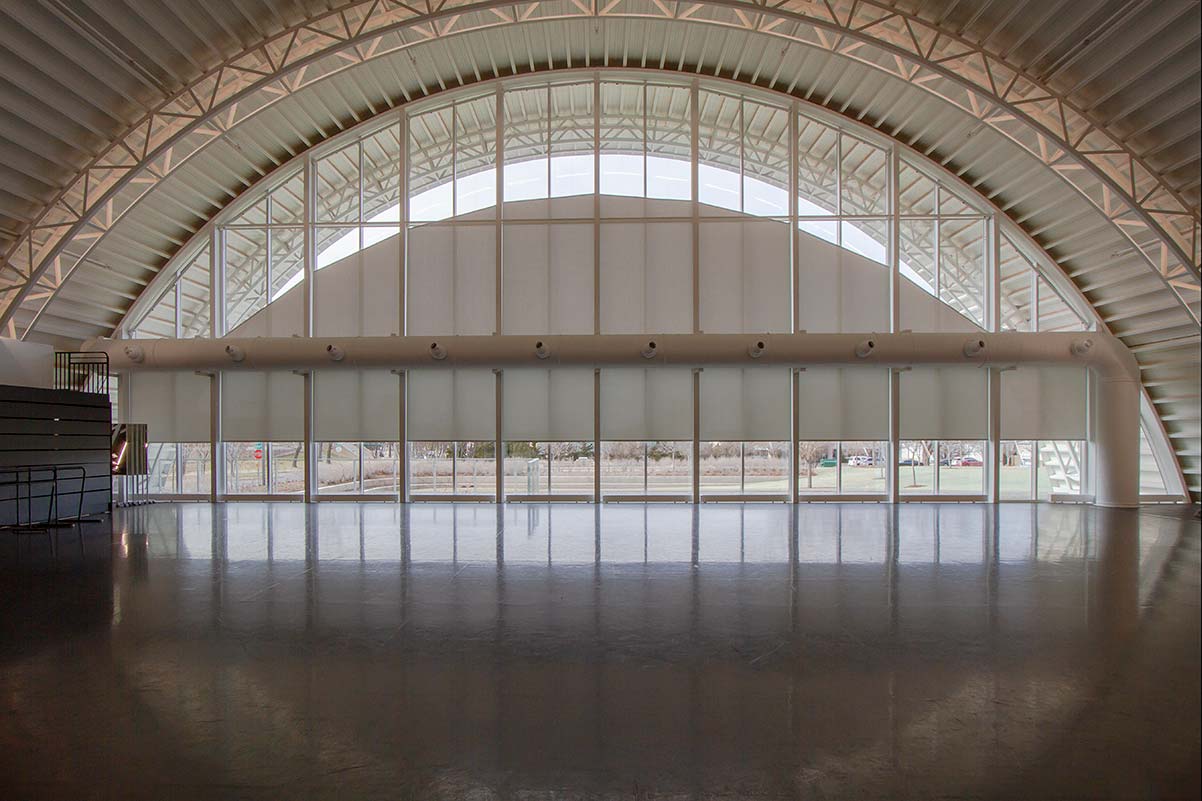
Mermet’s shade fabric products are on full display at the Oklahoma ballet. Photo by Kris Decker & Firewater Photography
Mermet created GreenScreen fabrics that are 100% recyclable, C2C Certified–Bronze, non-PVC, and made with as much as 89% recycled plastic waste. Mermet’s Evolve line contains up to 14 recycled water bottles per yard, and Revive fabric includes up to 11 post-consumer water bottles. Mermet also offers a GreenScreen Recovery Program, taking back and recycling these products.
“Clearly, the shades you choose have a huge effect on the final appearance of a building. Putting in careful thought at the outset will help you select the shade that best complements the space—both inside and outside,” Blackford previously wrote for gb&d.
GALE Pacific
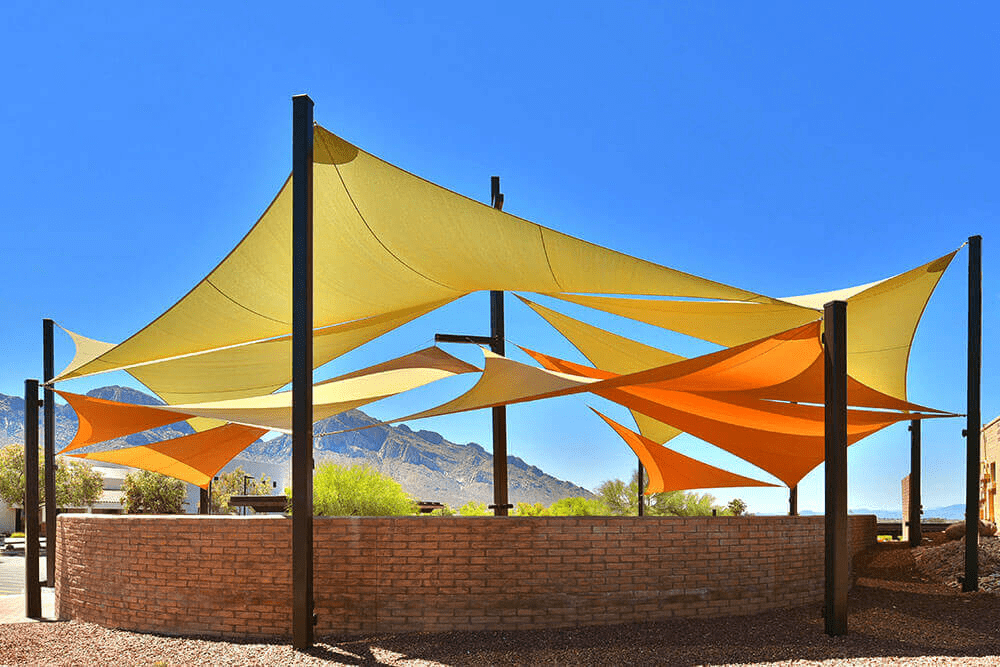
GALE Pacific’s new knitted flame retardant shade fabrics are expected to last 10 years outdoors. Photo courtesy of Shade Industries
GALE Pacific’s knitted shades are OEKO-TEX Standard 100- and GREENGUARD-certified, indicating they contain little to no toxic chemicals such as VOCs and phthalates. They also adhere to a cradle-to-cradle approach.
“Our products are inherently designed to last for a long period of time, and once they do reach end of life, they can be recycled,” Andrew Nasarczyk, research and development manager for GALE Pacific, told gb&d in an earlier article.
Polyfab USA
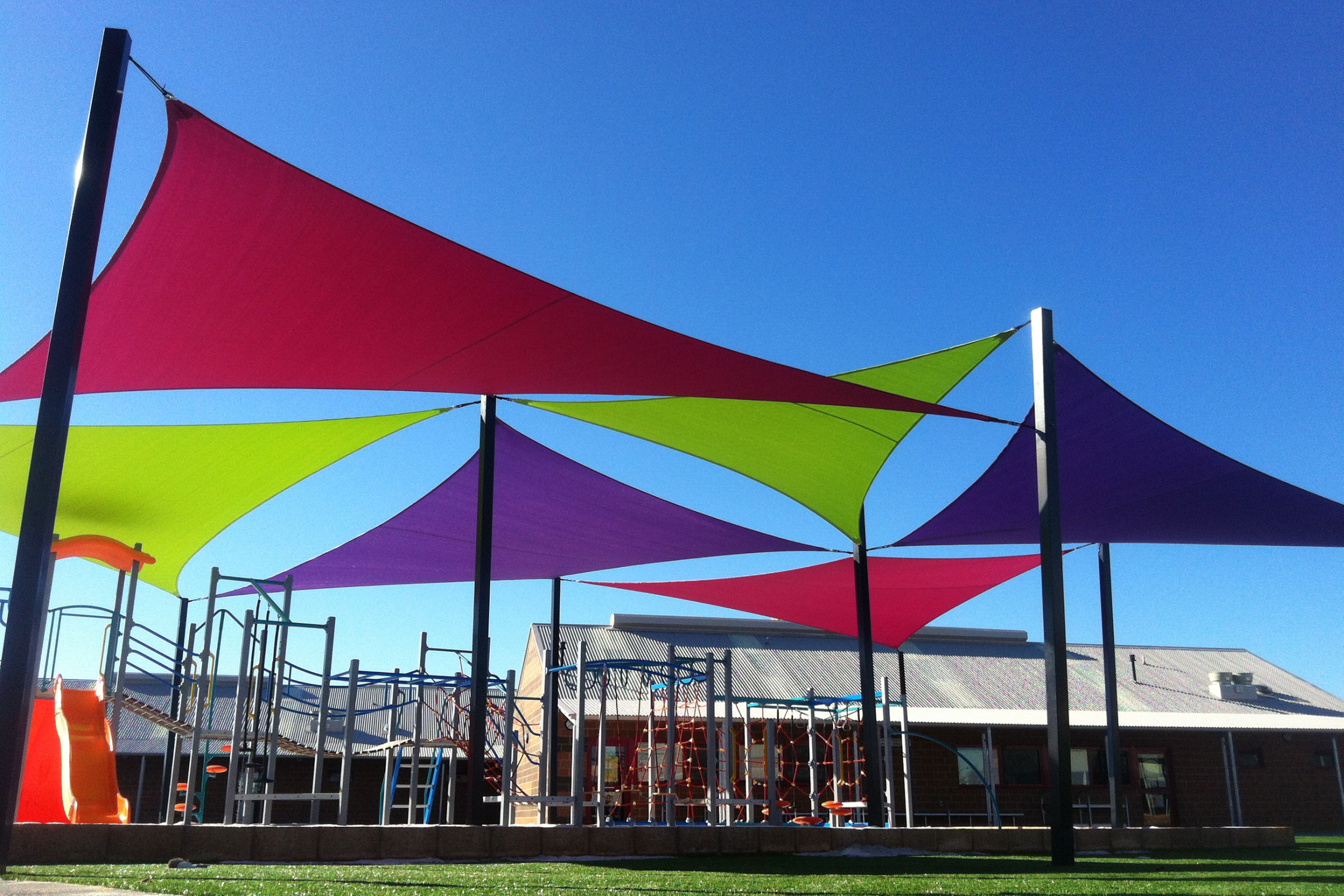
Shadesails made from Polytex+ protect you from the sun by leisure areas and swimming pools and offer a nice alternative to flat roof timber pergolas. Photo courtesy of Polyfab USA
Polyfab USA makes a HDPE shade fabric that is also offered in wide widths for easier fabrication, has a long life, and is 100% recyclable. Hot air “breathes” through the mesh fabric, so anyone beneath it actually feels cooler than they would under a solid shade like one made of PVC vinyl.




